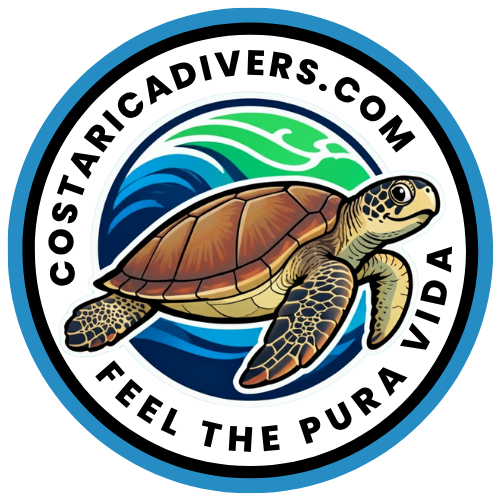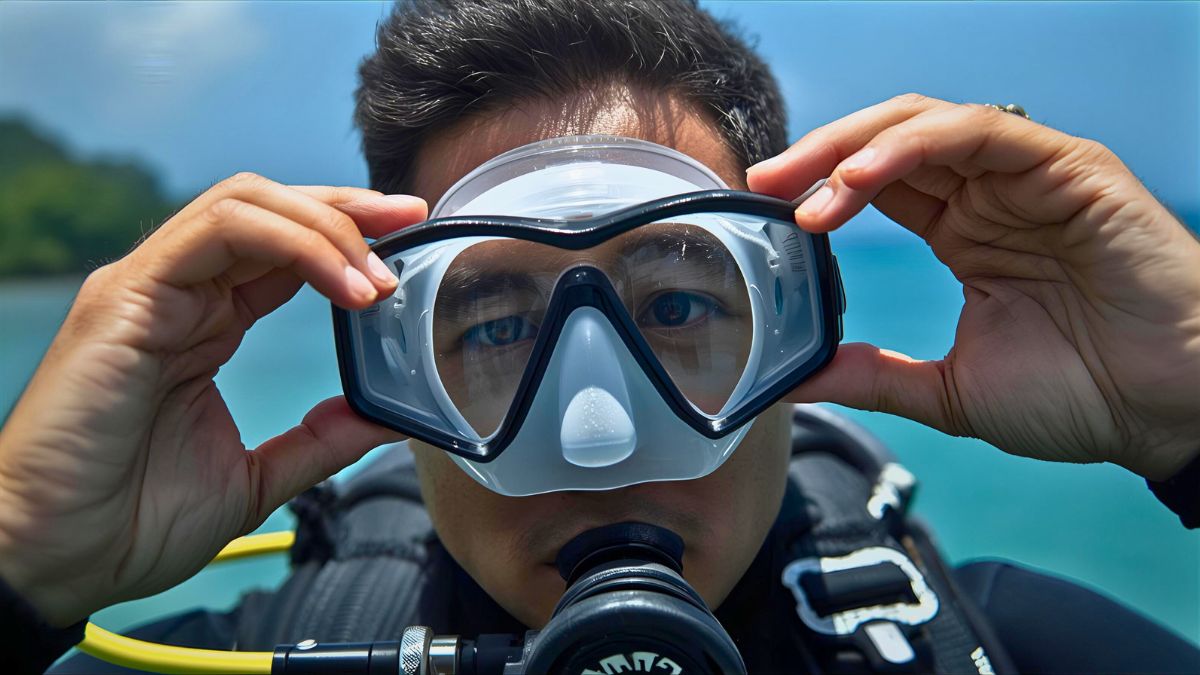I still remember my first visit in Golfo Dulce. As we descended into the calm, clear waters of this tropical fjord, a pod of bottlenose dolphins appeared out of the blue, swimming in perfect formation alongside our group. That’s when I understood why this place is so special.
Nestled along the southern Pacific coast of Costa Rica, Golfo Dulce is a hidden gem that offers a captivating blend of pristine waters, lush rainforests, and vibrant marine life. This secluded gulf is a must-visit destination that combines natural beauty with adventure.
This isn’t your typical crowded beach destination. It’s one of only four tropical fjords on Earth, and it’s remained remarkably untouched by mass tourism. In this guide, I’ll share everything I’ve learned from years of diving and exploring Golfo Dulce.
What Makes Golfo Dulce Special?
Why Is Golfo Dulce Called a Tropical Fjord?
When most people hear “fjord,” they picture Norway’s dramatic cliffs and icy waters. But Golfo Dulce breaks that mold entirely.
This stunning gulf is one of only four tropical fjords in the world. The other three are located in the Galapagos Islands, Indonesia, and Venezuela. That alone makes it incredibly rare.
Like its cold-water cousins, Golfo Dulce has a distinctive U-shaped profile. The gulf stretches approximately 50 kilometers in length and 10 to 15 kilometers in width. What really sets it apart is its depth, dropping to over 200 meters in some areas.
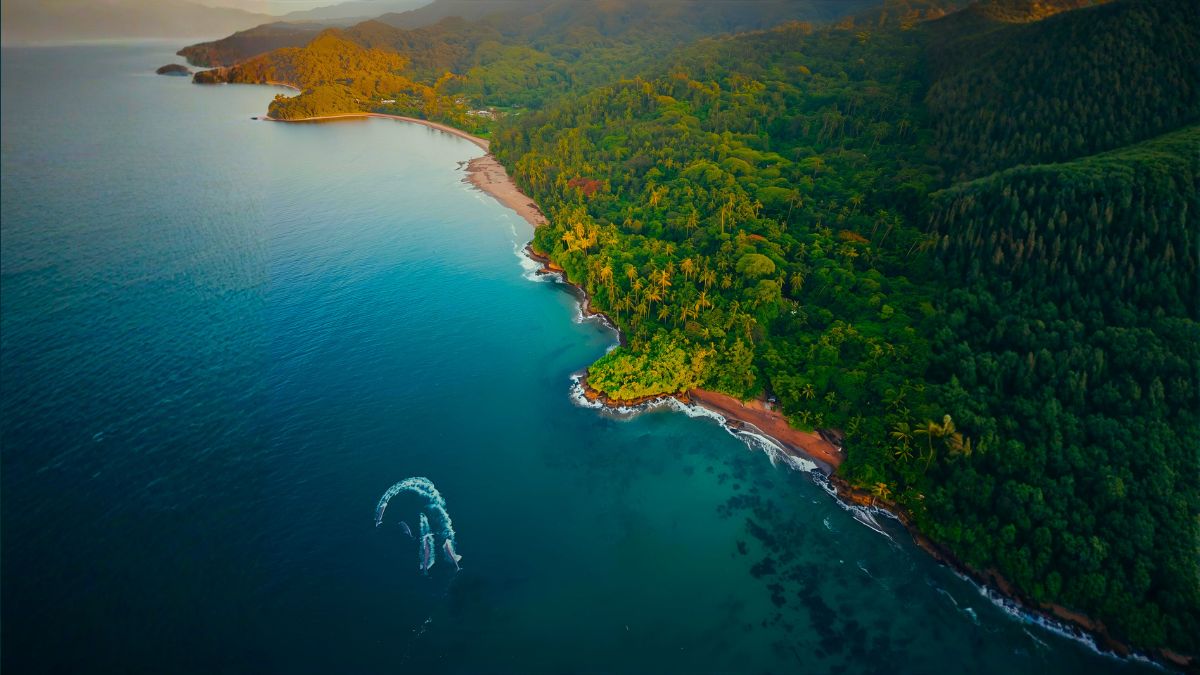
These deep waters create a unique ecosystem. Nutrient-rich currents flow through the fjord, bringing food that supports an incredible diversity of marine life. The surrounding rainforest-covered mountains feed the gulf with freshwater from four major rivers.
Where Is Golfo Dulce Located in Costa Rica?
Golfo Dulce sits in the southern Pacific region of Costa Rica, separating the famous Osa Peninsula from the mainland. The gulf opens to the Pacific Ocean in the south, while its northern end reaches toward some of Costa Rica’s most pristine protected areas.
On the eastern shore, you’ll find the town of Golfito, which serves as the region’s unofficial capital. Across the water on the western side lies Puerto Jiménez, the gateway to Corcovado National Park. Several small coastal communities dot the shoreline, including Zancudo and Pavones to the south.
The entire area is surrounded by Piedras Blancas National Park to the north and Corcovado National Park to the southwest. The location is perfect for travelers who want to combine marine activities with rainforest exploration.
Did you know? Golfo Dulce’s depth reaches over 200 meters in some areas, making it deeper than many ocean trenches near the coast. This creates a unique underwater environment where you can encounter both shallow reef species and deep-water visitors in the same dive trip.
What Is the Whale Heritage Site Designation?
In 2018, Golfo Dulce became recognized as a Whale Heritage Site by the World Cetacean Alliance. It’s the only location with this designation in all of Central and South America.
What earned this recognition? It’s the only place in the world where two different populations of humpback whales migrate to breed at the same location.
The North Pacific population arrives between December and March. Just as they’re leaving, the Southern Hemisphere population arrives from Antarctica, staying from July through October. This means you can potentially see humpback whales in Golfo Dulce for about eight months of the year.
Scuba Diving in Golfo Dulce
What Can You See While Diving in Golfo Dulce?
Every time I descend into these waters, I’m reminded why I became a diving instructor. The marine life in Golfo Dulce is simply spectacular.
White-tip reef sharks are the stars of many dives. These beautiful, harmless sharks rest on sandy bottoms or cruise along reef walls. On a typical two-tank dive, I usually spot between five and ten individuals.
Sea turtles are frequent companions on dives here. All four species found in Costa Rica visit Golfo Dulce. Green turtles and hawksbills are most common on reef dives, peacefully grazing on algae or resting in coral crevices.
The reef systems host an incredible variety of tropical fish. Massive schools of jacks swirl around coral pinnacles. Angelfish, butterflyfish, and parrotfish add splashes of color to every dive. Eagle rays glide gracefully through the water column, while manta rays occasionally visit.
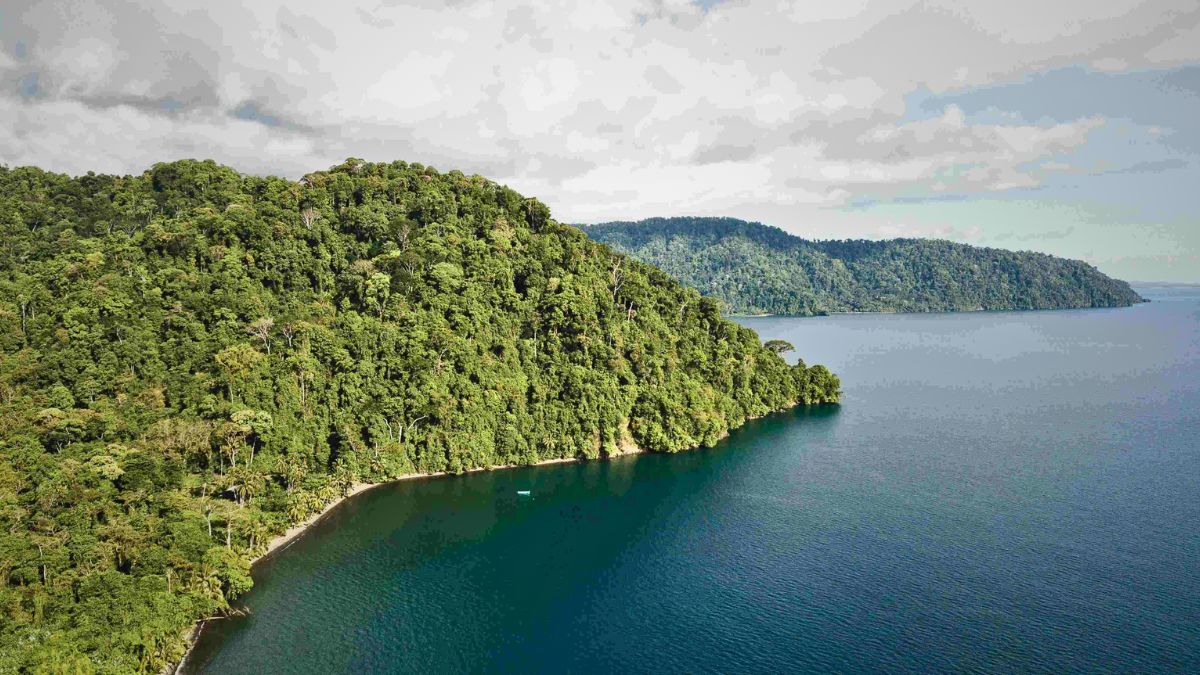
What’s the Water Visibility Like in Golfo Dulce?
Visibility varies with the season. During the dry season from December to April, you can expect 15 to 25 meters of visibility on most dives. The rainy season brings more runoff from rivers, which can reduce visibility to 8 to 15 meters.
Water temperatures stay comfortable year-round, ranging from 26°C to 29°C. You can dive comfortably in a 3mm wetsuit, though some divers prefer 5mm during cooler months.
What Are the Best Dive Sites in Golfo Dulce?
The shallow reefs along the coastline are perfect for beginners and those completing their open water certification. Depths range from 5 to 15 meters, with calm conditions and abundant marine life.
Deeper sites along the gulf’s edges offer more dramatic topography. Vertical walls drop to 25 to 35 meters, covered in colorful soft corals and sponges. These sites attract larger pelagic fish, including jacks, barracuda, and occasionally tuna.
Rocky pinnacles scattered throughout the gulf create unique diving opportunities. These underwater mountains rise from the deep, creating current patterns that attract schooling fish.
How Does Golfo Dulce Compare to Isla del Caño?
Isla del Caño is Costa Rica’s most famous dive site with more dramatic coral formations and higher chances of bull sharks and hammerheads. However, it requires a 1.5 to 2-hour boat ride each way and costs $120 to $160 per person.
Golfo Dulce offers easier, more affordable diving. Boat rides are 15 to 45 minutes depending on the site. Costs typically run $80 to $120 for two-tank dives. You can complete morning dives and have the afternoon for other activities.

When Is the Best Time to Dive in Golfo Dulce?
Diving is possible year-round in Golfo Dulce, but different seasons offer distinct advantages.
What’s the Best Season for Visibility?
The dry season from December through April brings the best visibility and calmest seas. Underwater conditions are pristine, with 20 to 25 meters of visibility common. This is also when North Pacific humpback whales visit the area.
Can You Dive During the Rainy Season?
The green season from May through November brings more rain, but morning dives often have excellent visibility before afternoon rains arrive. July through October is whale season for the Southern Hemisphere population. Hearing whale song while diving is an unforgettable experience.
Wildlife Encounters in Golfo Dulce
When Can You See Humpback Whales in Golfo Dulce?
The humpback whale phenomenon in Golfo Dulce is truly unique. Nowhere else on Earth do two separate populations converge like this.
The North Pacific population arrives between December and March, with peak numbers in January and February. The Southern Hemisphere population arrives between July and October, with August and September bringing peak numbers.
This dual migration creates an almost year-round whale season. There’s only a brief gap in May-June and November when no whales are present.
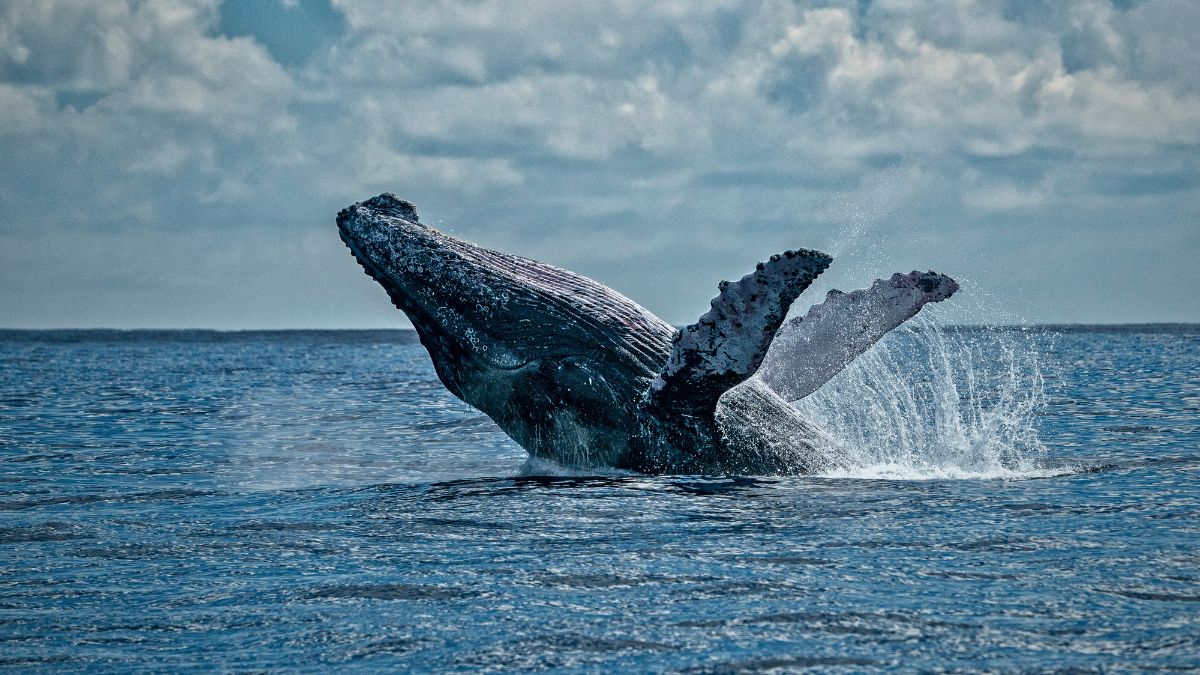
Are There Regulations for Whale Watching?
Costa Rica has strict regulations protecting whales. Boats must maintain at least 100 meters distance. No more than three boats can approach a single group. Swimming with or touching whales is strictly prohibited and carries heavy fines.
From underwater, hearing whale song during a dive is absolutely magical. The sound is omnipresent, seeming to come from everywhere. You feel it in your chest as much as hear it through your ears.
Can You See Dolphins in Golfo Dulce?
Dolphins are one of the most reliable highlights in Golfo Dulce. Unlike whales, which are seasonal, dolphins live here year-round.
The resident bottlenose dolphin population is particularly special. These are inshore ecotype dolphins, meaning they prefer coastal waters. The entire Pacific coast of Costa Rica and Panama hosts fewer than 500 individuals.
I see bottlenose dolphins on about 70% of my boat trips in Golfo Dulce. They’re incredibly curious and playful, often approaching boats to ride bow waves.
Fun fact: Golfo Dulce is the only place in the world where humpback whales from both the Northern and Southern Hemispheres come to breed. This unique phenomenon happens because of the gulf’s perfect combination of warm temperatures, protection from ocean currents, and abundant food sources.
What Other Dolphin Species Live Here?
Pantropical spotted dolphins also frequent these waters. They tend to travel in larger pods, sometimes numbering 20 or more individuals. Spinner dolphins occasionally visit, named for their spectacular spinning jumps.
The best time to see dolphins is early morning, typically between 6:00 and 9:00 AM. They’re most active during these hours, feeding and socializing.
What Other Marine Life Lives in Golfo Dulce?
Four species of sea turtles visit these waters. The hammerhead shark sanctuary in northern Golfo Dulce protects a critical nursery area for scalloped hammerheads. Bull sharks occasionally visit, particularly between May and November.
Spotted eagle rays are my favorites, swimming with such grace they seem to fly underwater. Sport fish species are abundant, making Golfo Dulce a haven for fishing enthusiasts. Inshore waters host roosterfish, snapper, jacks, and mackerel. Offshore, anglers target dorado, marlin, sailfish, and yellowfin tuna.
Beyond Diving: Other Activities in Golfo Dulce
Is Snorkeling Good in Golfo Dulce?
Absolutely. The shallow reefs along the coastline are perfect for snorkeling. You can see colorful tropical fish, sea turtles, and small reef sharks from the surface. Many areas have depths of only 3 to 8 meters.
Several beaches around the gulf offer direct access to snorkeling spots. You can simply walk into the water from shore and start exploring. The calm conditions inside the gulf make snorkeling comfortable even for beginners and families.
Can You Go Kayaking in Golfo Dulce?
Kayaking in Golfo Dulce offers a completely different perspective on this ecosystem. The calm water conditions make it ideal for all skill levels.
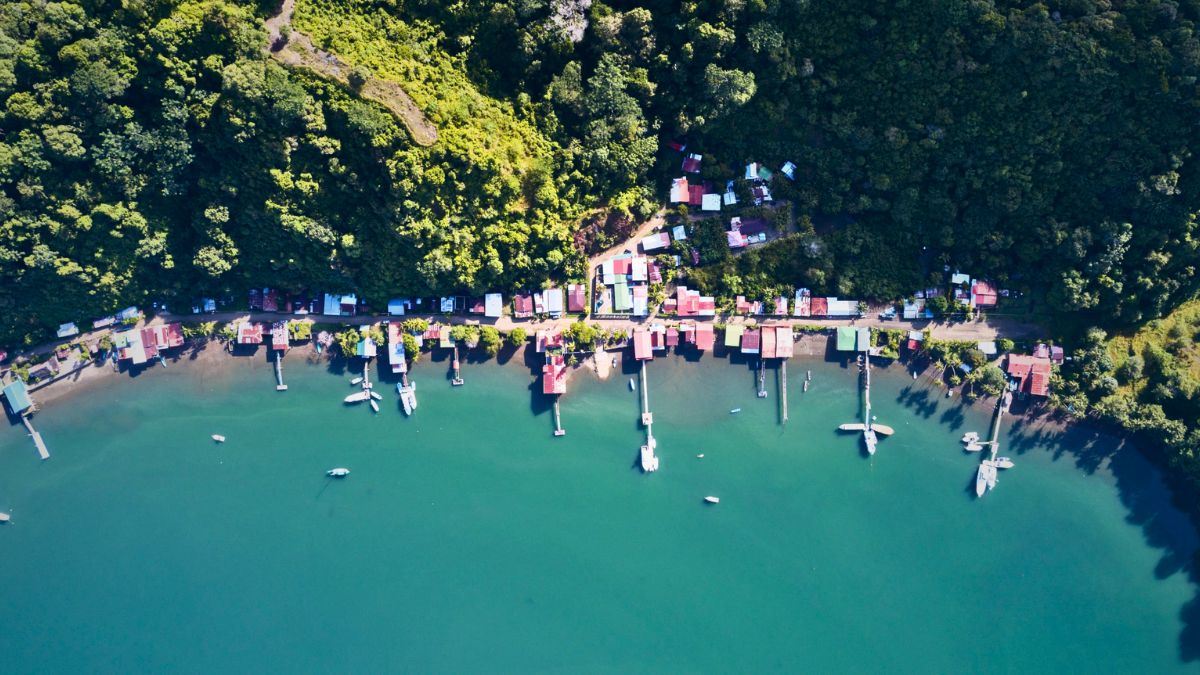
What Can You See While Kayaking in the Mangroves?
Mangrove kayaking is particularly special. The northern edges of Golfo Dulce feature extensive mangrove forests. In the mangroves, you’ll encounter incredible biodiversity. Crocodiles sun themselves on muddy banks. River otters play in the water. Monkeys move through the canopy overhead.
Bird watching from a kayak is phenomenal. Herons, egrets, kingfishers, and countless other species hunt in the shallows. The Golfo Dulce area hosts over 400 bird species.
What About Sport Fishing in Golfo Dulce?
The deep waters support both inshore and offshore fishing. Inshore species include the iconic roosterfish, named for their dramatic dorsal fins. Offshore fishing targets sailfish, marlin, dorado, yellowfin tuna, and wahoo.
Fishing is possible year-round, though December through April typically offers the best offshore conditions. Catch and release is strongly encouraged for conservation.
Exploring the Surrounding Areas
What Can You Do in Piedras Blancas National Park?
Piedras Blancas National Park borders the northern edge of Golfo Dulce, protecting 14,000 hectares of pristine lowland rainforest. Bird watching here is world-class. Over 350 species have been recorded. Scarlet macaws fly overhead in pairs. Toucans perch in fruiting trees.
All four Costa Rican monkey species live here. Jaguars, tapirs, ocelots, and peccaries roam these forests. While seeing these species requires luck and patience, knowing they’re here adds to the sense of wilderness.
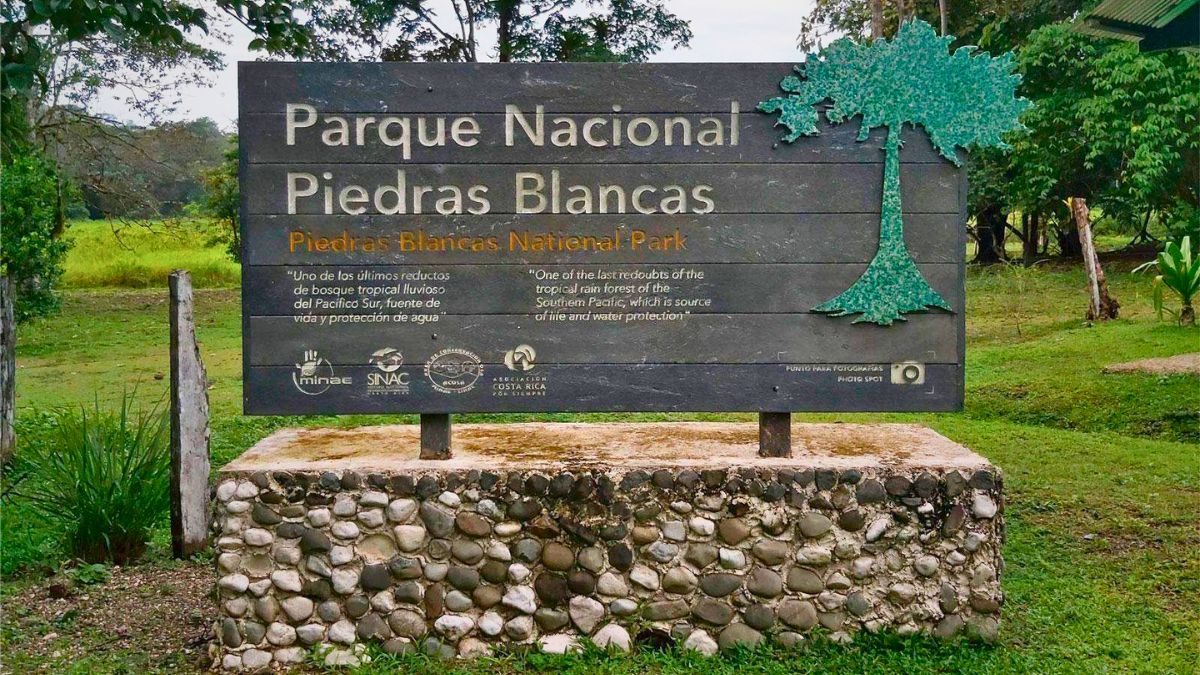
Should You Visit Corcovado National Park from Golfo Dulce?
Absolutely. Corcovado is often called the most biodiverse place on Earth. National Geographic described it as “the most biologically intense place on Earth in terms of biodiversity.”
The park has 13 distinct ecosystems. All four monkey species live here. All six Costa Rican wild cat species, including jaguars, prowl these forests. Over 400 bird species call Corcovado home.
All visitors must hire a certified guide. Day hikes from various entry points provide excellent introduction to the park. Puerto Jiménez serves as the primary gateway to Corcovado from the Golfo Dulce area.
What Are the Best Beaches Near Golfo Dulce?
Zancudo is a long, palm-shaded beach on the southern end of the gulf. The black sand beach stretches for kilometers, perfect for long walks. The waves here are gentle enough for swimming but consistent enough for surfing.
Pavones, just south of Zancudo, is famous worldwide among surfers. The left-hand point break here is one of the longest in the world, with rides exceeding two minutes when conditions align.
Playa Cacao sits on the western side of the gulf, accessible primarily by boat. This remote beach sees few visitors, offering true solitude.
Practical Information for Visiting Golfo Dulce
How Do You Get to Golfo Dulce?
Can You Fly to Golfo Dulce?
Flying is the quickest option. Two small airports serve the area: Golfito and Puerto Jiménez. SANSA and Green Airways operate daily flights from San José. The flight takes about 45 minutes.
I usually recommend flying into Puerto Jiménez if your focus is diving, wildlife, and Corcovado access.
How Long Does It Take to Drive There?
Driving from San José takes six to seven hours. Take the Interamericana Highway south through San Isidro de El General, then turn onto Route 245. Get a 4WD vehicle, even during dry season.
Public buses run from San José to Puerto Jiménez and Golfito. The journey takes 7 to 8 hours and costs significantly less than flying.
Where Should You Stay in Golfo Dulce?
Is Puerto Jiménez a Good Base?
Puerto Jiménez offers the most options and best access to services. Budget travelers find hostels starting around $30 per night. Mid-range hotels offer comfort for $60 to $100 per night.
I often recommend Puerto Jiménez for divers and active travelers. You’re close to boat launches for diving and dolphin tours.
What About Eco-Lodges?
Eco-lodges around the gulf provide immersive nature experiences. Many are accessible only by boat, surrounded by primary rainforest. These properties typically include meals and activities. Expect to pay $200 to $500+ per night.
Waking up to howler monkeys, having dolphins swim past your private beach, and falling asleep to rainforest sounds creates memories that justify the premium prices.
When Is the Best Time to Visit Golfo Dulce?
What’s the Weather Like in Dry Season?
December through April is the classic dry season. Weather is sunny and warm with minimal rain. Seas are calmest, perfect for diving and boat tours. This is also when North Pacific humpback whales visit.
Should You Visit During the Rainy Season?
July through October brings the green season and Southern Hemisphere whales. Mornings often start clear with afternoon rains. The advantage? Significantly fewer tourists, lower prices, and the incredible experience of diving with whale song all around you.
My personal favorite time is August and September. The combination of whale activity, fewer tourists, lush rainforest, and lower prices creates a special experience.
Conservation and Responsible Tourism
How Is Golfo Dulce Protected?
The entire gulf is designated as part of the Piedras Blancas National Park marine protected area. In 2018, a 4,000-hectare area became Costa Rica’s first hammerhead shark sanctuary. This no-take zone protects critical nursery habitat.
The Whale Heritage Site designation recognizes the area’s importance for humpback whales and the community’s commitment to responsible whale watching.
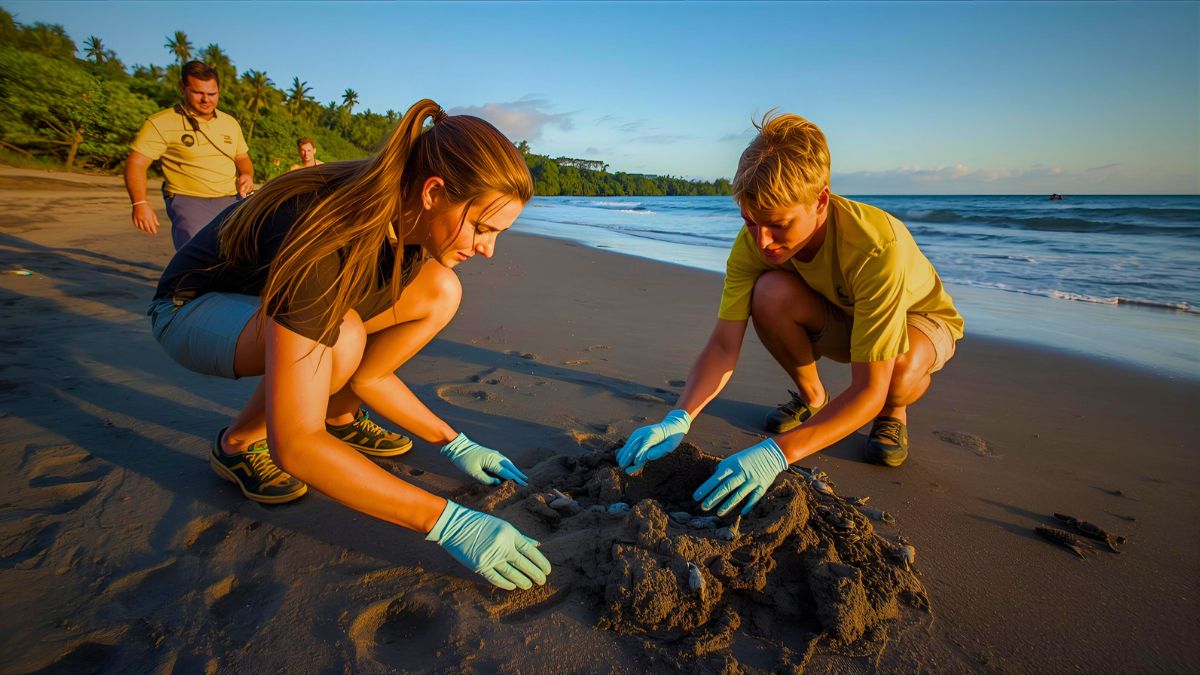
How Can You Support Conservation in Golfo Dulce?
Choose certified operators for all tours and activities. Look for boats displaying official permits. Respect wildlife viewing guidelines. Never approach whales or dolphins closely.
Use reef-safe sunscreen. Don’t use single-use plastics. Dispose of trash properly. Stay on marked trails.
When you book diving, dolphin watching, or whale watching tours with responsible operators, you’re directly supporting conservation. These businesses depend on healthy ecosystems, giving them strong incentives to protect wildlife and habitats.
Golfo Dulce in Costa Rica – Conclusion
Golfo Dulce represents the Costa Rica many travelers seek but few find. It’s one of only four tropical fjords on Earth, the only Whale Heritage Site in Central and South America, and a thriving example of conservation success.
I’ve been diving and exploring this area for years, and it still surprises me. Every trip brings new encounters. Dolphins appearing out of the blue. Whale song resonating through your body during a dive. White-tip sharks peacefully resting in their caves.
Whether you’re a diver eager to explore a rare tropical fjord, a wildlife enthusiast hoping to see humpback whales and dolphins, or simply someone seeking natural beauty and adventure, Golfo Dulce delivers.
Golfo Dulce is waiting. The dolphins are playing. The whales are singing. The rainforest is calling.
Sources and References
This article draws on research and information from authoritative sources to ensure accuracy:
- World Cetacean Alliance
- Sistema Nacional de Áreas de Conservación
- Misión Tiburón – Hammerhead Shark Research
- Costa Rica Tourism Board
- National Geographic – Tropical Fjords and Biodiversity Research
